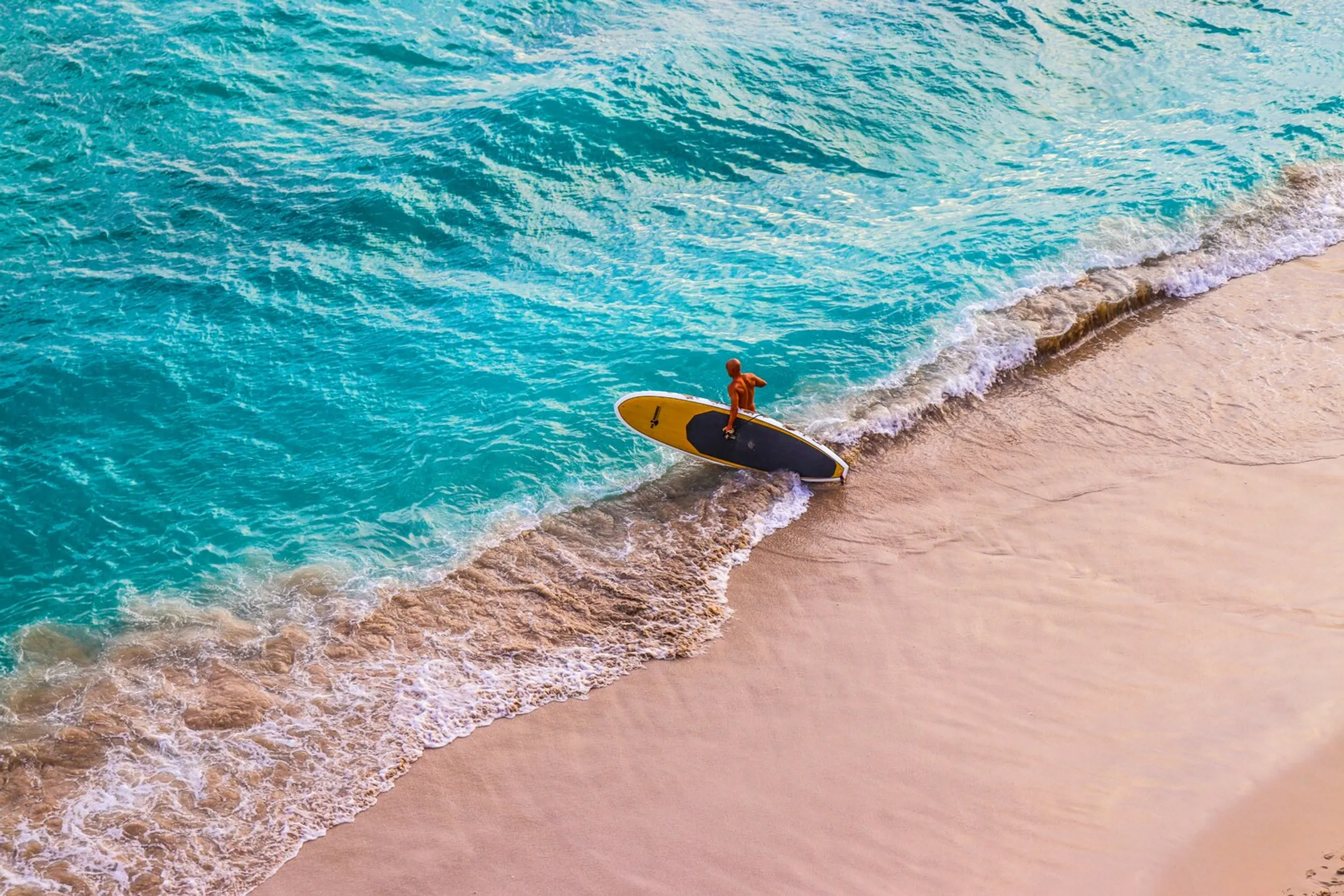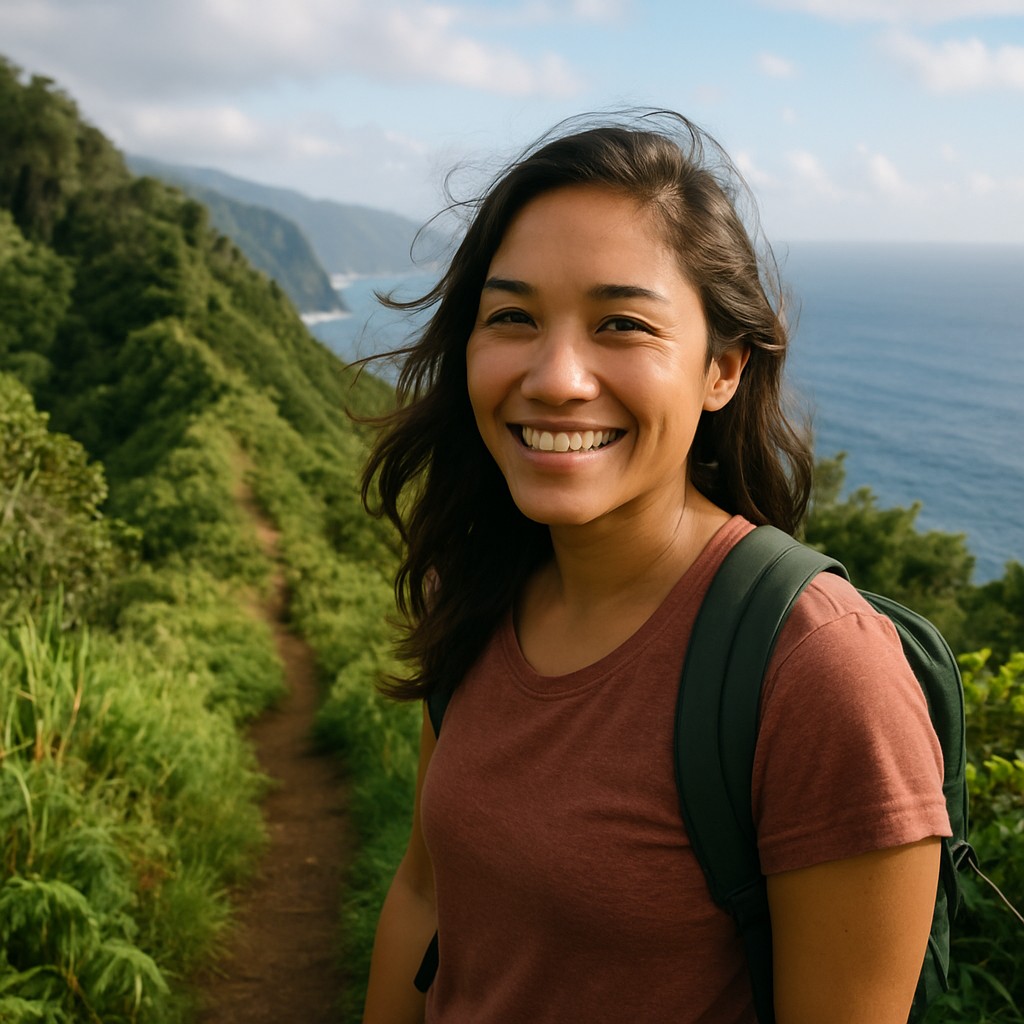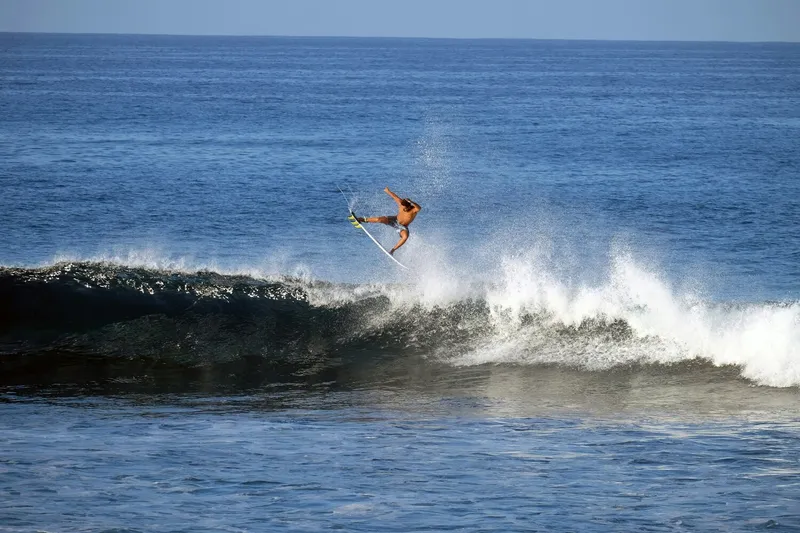

The Soul of the Wave
An exhaustive guide to surfing in Hawaii - from ancient heʻe nalu to modern mastery

Written by a Local Surf Expert
Jade KawanuiThe Heartbeat of Hawaii: Understanding the Wave
The first time I truly understood the Hawaiian wave, I wasn't riding it. I was sitting on the sand at Ehukai, feeling the ground tremble as a winter swell detonated on the reef. It wasn't just power. It was a heartbeat. That's the pulse of Hawaii.
This guide is more than a list of beaches. It's an invitation to understand the soul of surfing, to connect with the deep, resonant history that lives in every crest and trough. From the sacred origins of the sport to the practical knowledge you need to find your own perfect wave.
Whether you're here to watch the greatest show on earth from the safety of the sand or to paddle out and feel that pulse for yourself, this is your definitive guide to the Hawaiian surf experience.

Heʻe Nalu: More Than a Sport, A Cultural Legacy
To understand surfing in Hawaii, you must first understand that it was never just a sport. It was heʻe nalu—literally, "wave sliding"—a practice deeply woven into the spiritual and social fabric of ancient Hawaiian life. This was not a mere pastime. It was a form of communion with the ocean.
The connection between heʻe nalu and spirituality was absolute. Before entering the water, surfers would perform chants and offer prayers, often to Kanaloa, the god of the ocean, seeking his blessing for safety and for good waves. If the ocean was calm, a kahuna (priest) might be called upon to assist in rituals to beckon the surf. Along the shores, stone temples known as heiau were dedicated specifically to surfing, where communities would gather to observe competitions, celebrate, and pray.
The Sacred Creation of Surfboards
This spiritual reverence extended to the very tools of the practice. The creation of a surfboard was a sacred and ritualized process. A master craftsman would carefully select a koa, ʻulu (breadfruit), or wiliwili tree, making offerings to its spirit before it was felled. The log would be roughly shaped with an adze of bone or stone and then taken to a halau (canoe house) for meticulous refinement using coral and rock.
The board would be stained black with plant-based dyes and finished with kukui nut oil for a smooth, waterproof sheen. Once completed, the board was consecrated with a dedication ceremony before its first use and was cared for as a treasured possession, rubbed with coconut oil and wrapped in tapa cloth after every session.
👑 The Olo
Majestic 14-18 foot boards for aliʻi (royalty). Made from lightweight wiliwili wood, weighing up to 175 pounds. Symbols of power and prestige, designed for gently sloping royal breaks.
🏄 The Alaia
6-12 foot boards for makaʻāinana (commoners). Made from dense koa wood, thinner and finless, requiring incredible skill and balance to ride the faster, steeper waves.
🌊 The Paipo
4-5 foot bodyboard-like craft for everyone, especially children. Ridden in prone position, representing the ancestral beginning of bodyboarding.
A Society on the Waves: The Kapu System
The importance of heʻe nalu was reflected in its integration into the rigid social hierarchy known as the kapu system. Surfing was a pursuit for everyone—men, women, and children—but the type of board one could ride was strictly dictated by social rank. Surfing was far more than recreation. It was a stage for life itself.
Prowess on the waves was a mark of distinction and a way to gain social standing. Surfing matches were held to settle disputes, often with high-stakes wagers like canoes or land. It was also a vibrant arena for courtship, where men and women would display their skills to attract a mate, sometimes even riding the same wave in a show of shared grace that could lead to romance.
The Decline and Rebirth of Hawaiian Surfing
The arrival of European explorers and Christian missionaries in the late 18th and early 19th centuries marked a devastating turning point. The missionaries viewed heʻe nalu as the idle pastime of "chattering savages," disapproving of the gambling, the near-nudity, and the free intermingling of the sexes that accompanied it.
This cultural assault was compounded by a biological catastrophe. Foreign diseases, to which Native Hawaiians had no immunity, ravaged the population, which plummeted from an estimated 300,000 in 1778 to less than 40,000 by 1900. With the cultural foundations shaken and the population decimated, the art of heʻe nalu faded. By the 1890s, observers noted that surfing was a rare sight, and the great boards of the aliʻi were found mostly in museums.
Yet, the spirit of wave riding was never fully extinguished. The revival began with defiant acts of cultural preservation. King David Kalākaua, "The Merrie Monarch," actively worked to restore ancient practices, including hula and surfing, in the late 19th century.
The Seeds of Revival
In a pivotal moment in 1885, three young Hawaiian princes—Jonah Kūhiō Kalanianaʻole, David Kawānanakoa, and Edward Keliʻiahonui—attending school in California, famously shaped boards from local redwood and surfed the waves at the mouth of the San Lorenzo River, planting the first seeds of surf culture on the mainland.
As the 20th century dawned, a small but dedicated group of Waikiki beach boys, including a young Duke Kahanamoku, kept the flame alive, setting the stage for a global phenomenon that would see surfing transform from a nearly extinct cultural practice into one of the world's most beloved sports.
Cultural Renaissance
King Kalākaua actively worked to restore ancient practices, including hula and surfing, in the late 19th century.
Global Ambassador
Duke Kahanamoku used his Olympic fame to introduce surfing to California, Australia, and the world.
Today, surfing stands as one of Hawaii's greatest cultural exports, a testament to the resilience of Native Hawaiian culture and the enduring power of the ocean's call. What was once nearly lost is now a global phenomenon, but its sacred heart remains here in Hawaiian waters.
The Enduring Spirit of Aloha
Our journey through the world of Hawaiian surf has taken us from the sacred rituals of ancient heʻe nalu to the modern-day spectacle of the North Shore, from the first gentle push into a Waikiki roller to the thundering heartbeat of a 50-foot wave at Waimea. We've met the legends who shaped the sport and the local craftsmen who continue to imbue it with soul.
The ultimate takeaway is that to surf in Hawaii is a privilege. It is an opportunity to connect with nature in its most powerful form, to participate in a deep and resilient culture, and to touch a part of yourself that is courageous and joyful.
Whether you catch one wave or one hundred, whether you're a spectator awed by the power or a participant humbled by it, carry the spirit of aloha with you. Respect the ocean, respect the land, and respect the people who call this sacred place home. The wave will always be there. How you approach it is what truly matters.
Ready to Explore Hawaiian Surf Culture?
Dive deep into every aspect of surfing in Hawaii - from legendary waves to sacred traditions
ℹ️ Quick Info
- Best Season: Year-round
- Lesson Duration: 2 hours
- Price Range: $75-$150
- Min Age: 5+ years
- Experience: All levels
🌊 Seasonal Surf
- North Shore Nov-Mar
- South Shore May-Sep
- Waikiki Year-round
- East Shore Variable
🏄♂️ Breaks by Level
Waikiki, Launiupoko
Hanalei, Hoʻokipa
Pipeline, Sunset
Waimea, Peʻahi
🔗 Explore Hawaiian Surfing
📧 Stay Updated
Get the latest Hawaii adventure tips and exclusive deals.

